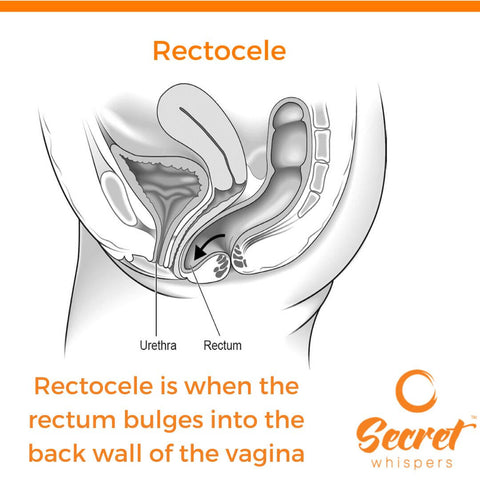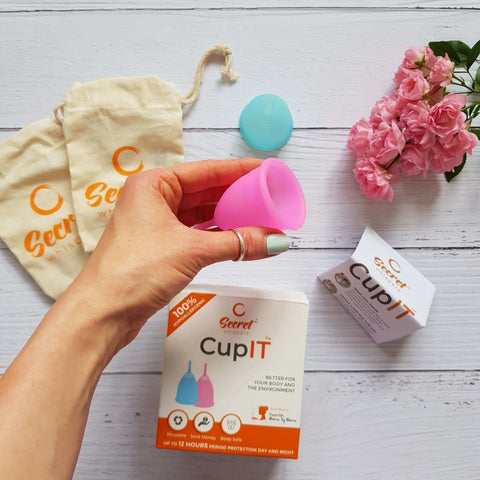Rectocele vs. Rectal Prolapse: Understanding Symptoms and Treatment Options
by Julie ColanIn the realm of pelvic floor disorders, rectocele and rectal prolapse are frequently discussed topics.
I know they sound very similar but they are very different and many women have asked me,
"What is the difference between a Rectocele and a Rectal Prolapse?"
While they may seem similar, understanding their unique symptoms and treatment options is essential for proper management.
A Rectocele involves the protrusion of the rectum into the vagina.
A Rectal prolapse occurs when the rectal walls protrude through the anus.
Let's explore the disparities between rectocele and rectal prolapse, and how they impact individuals dealing with pelvic floor issues.
Rectocele: Symptoms and Treatment Options

Rectocele symptoms often include:
- Difficulty passing stools,
- A sensation of incomplete bowel movements,
- A sensation that something is stuck in the rectum,
- Pelvic pressure or discomfort,
- A dragging feeling inside your vagina,
- A noticeable bulge or protrusion in the vaginal area.
These symptoms are typically a result of weakened pelvic floor muscles, that occurs as a result of the pelvic floor weakening and the thinning of the tissues that separate the rectum from the vagina, (known as the rectovaginal septum).
Occurs often due to factors like vaginal childbirth complications or hormonal changes, hysterectomy, constipation and straining are among the many factors that can cause this.
Also, did you know that if you have a rectocele, you are at a higher risk of developing a cystocele (bladder prolapse)? Therefore, it is essential to strengthen your pelvic floor through Kegel exercises.
Treatment for rectocele typically involves a variety of options. Pelvic floor exercises, also known as Kegels, are commonly recommended to strengthen weakened muscles and improve pelvic support as the first line in support.
Additionally, dietary adjustments to alleviate bowel movement difficulties, such as increasing fiber intake, can help manage symptoms, and also the use of a pessary.
For more severe cases, surgical intervention may be necessary to repair the rectovaginal wall and restore normal anatomy.
Rectal Prolapse: Causes and Treatment Options
Rectal prolapse, on the other hand, involves the protrusion of the rectum through the anus. Common causes include chronic constipation, prolonged straining during bowel movements, and pelvic floor dysfunction.
Rectal Prolapse is not the same as Haemorrhoids (piles).
Symptoms of Rectal Prolapse can include:
- Visible protrusion of the rectum,
- Difficulty controlling bowel movements,
- Passing lots of small stools,
- Anal leakage (including mucus),
- Rectal bleeding, itching and pain.
Did you know that anyone can suffer from a rectal prolapse? Yes, women, men and children. So, it is very important to know the causes, symptoms and possible solutions.
When it comes to rectal prolapse, it is very important to address your diet and toilet habits to avoid constipation and straining.
In my next 30 Day Pelvic Floor Challenge I cover the correct ways to go to the toilet and how to do your Kegel exercises correctly in just 15 minutes a day.
⭐⭐⭐⭐⭐Highly recommend!
Great supportive group
Julie who runs it is excellent at what she does!
I was talking about it to my consultant who was very impressed how much its helped!
Thank you Julie and group.
Lata
Rectal prolapse should be addressed as soon as possible. Recommended first line treatments are Kegels with pelvic floor therapy. Also, constipation bowel management techniques and straining avoidance and good toilet habits may be recommended to alleviate symptoms.
With more severe cases surgical intervention may be required. So always please seek medical advice as soon as you are aware of any issues to prevent the symptoms getting worse.
Pelvic Floor Disorders and Bowel Movement Difficulties
Both Rectocele and Rectal Prolapse are classified as pelvic floor disorders, highlighting the importance of maintaining pelvic health.
Pelvic floor exercises play a crucial role in managing and preventing these conditions by improving muscle tone and support. Incorporating exercises that target the pelvic floor muscles into your daily routine can help alleviate symptoms and reduce the risk of recurrence.
It's also essential to address underlying factors that contribute to bowel movement difficulties, such as constipation or straining. Increasing fiber intake, staying hydrated, and establishing a regular bowel routine can all promote healthy bowel habits and reduce strain on the pelvic floor.
Conclusion: Seeking Comprehensive Care for Pelvic Health
In conclusion, while rectocele and rectal prolapse share some similarities, they are distinct conditions with unique causes and treatment approaches. Understanding the symptoms and treatment options for each condition is crucial for effectively managing pelvic floor disorders and promoting overall well-being.
Whether experiencing rectocele symptoms or dealing with rectal prolapse, seeking comprehensive care from healthcare professionals specializing in pelvic health is essential for optimal outcomes and quality of life.
For more information on urinary incontinence and pelvic health, explore our Multi Award Winning Pelvic Floor Strengthener.
Designed to strengthen your pelvic floor muscles from just 15 minutes a day. Improve prolapse, stress and urge incontinence in 6 easy steps.
Just 15 minutes a day to a stronger pelvic floor and they last for LIFE!
EXPLORE MORE ARTICLES ON PELVIC HEALTH
Links to Related Blogs:
MAKE THE SWITCH – REUSABLE MENSTRUAL CUPS SET (SMALL & MEDIUM INCLUDED) - BUY NOW £29.99
OR, CHOOSE FROM A SINGLE SMALL OR MEDIUM SECRET WHISPERS REUSABLE MENSTRUAL CUP - COMFORTABLY USE FOR 12 HOURS - FREE DELIVERY - JUST £15.99
If you're seeking to enhance your pelvic floor strength within a month and master the proper techniques for Kegel exercises, we invite you to join our upcoming 30-Day Pelvic Floor Challenge.
This program aims to establish daily Kegel routines and get you into the daily habit of doing your Kegels every day with ease.
We start on Monday, April 8th, 2024. Don't miss this opportunity to prioritize your pelvic health and achieve lasting benefits.
➡️➡️➡️ Sign up now to be leak free for summer!
You can also join our fabulous womens only private Facebook Group
Never miss another blog again. Sign up now to our weekly Newsletter. You will get a 10% discount code to use too. Just click below ⬇️⬇️⬇️
















